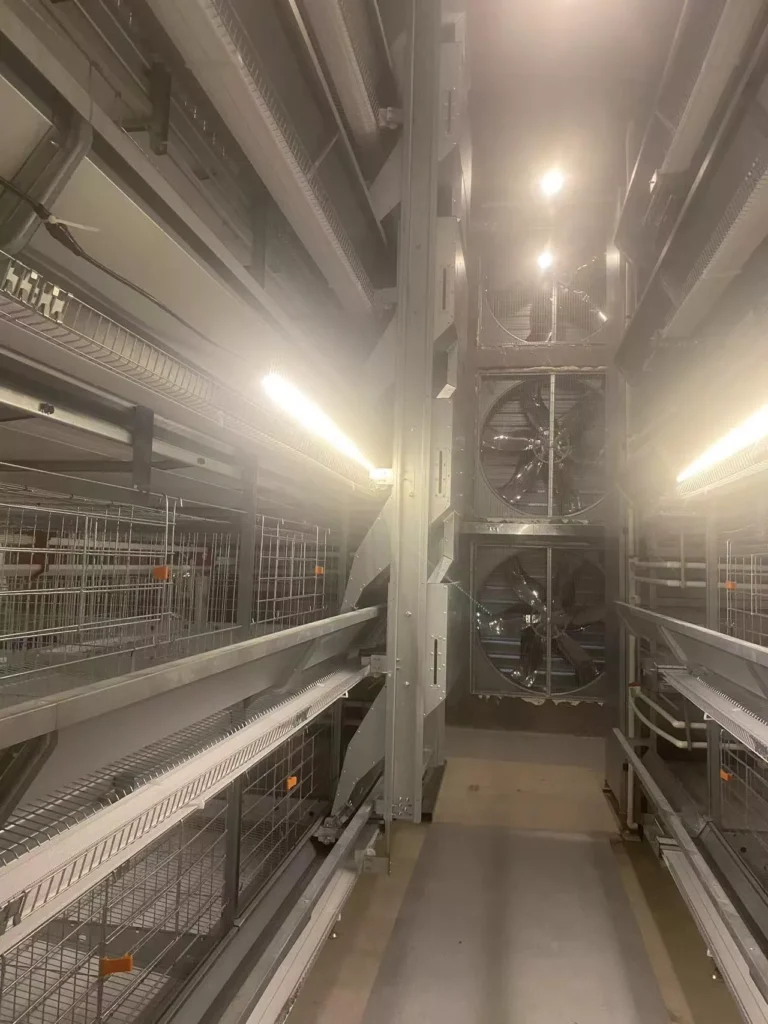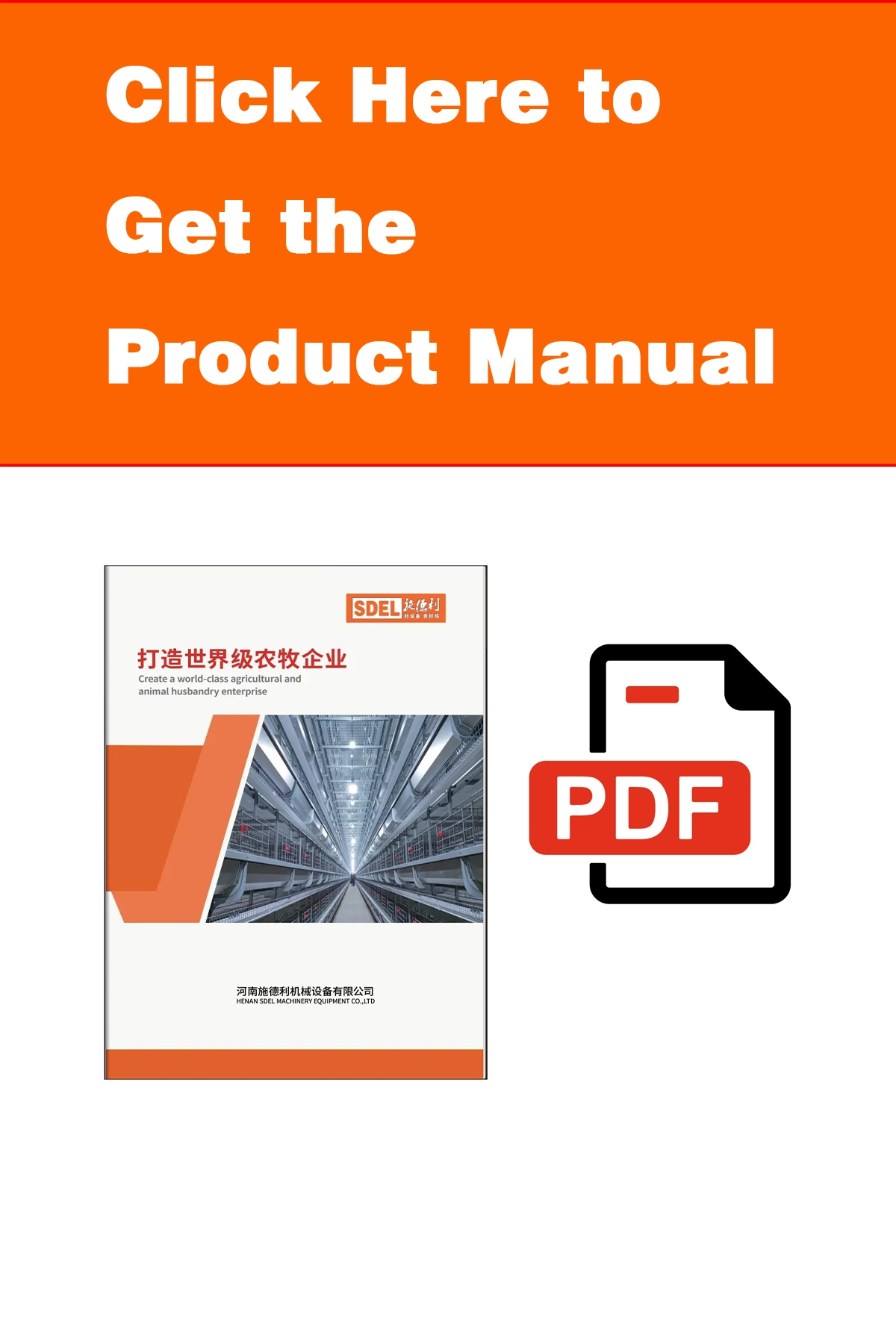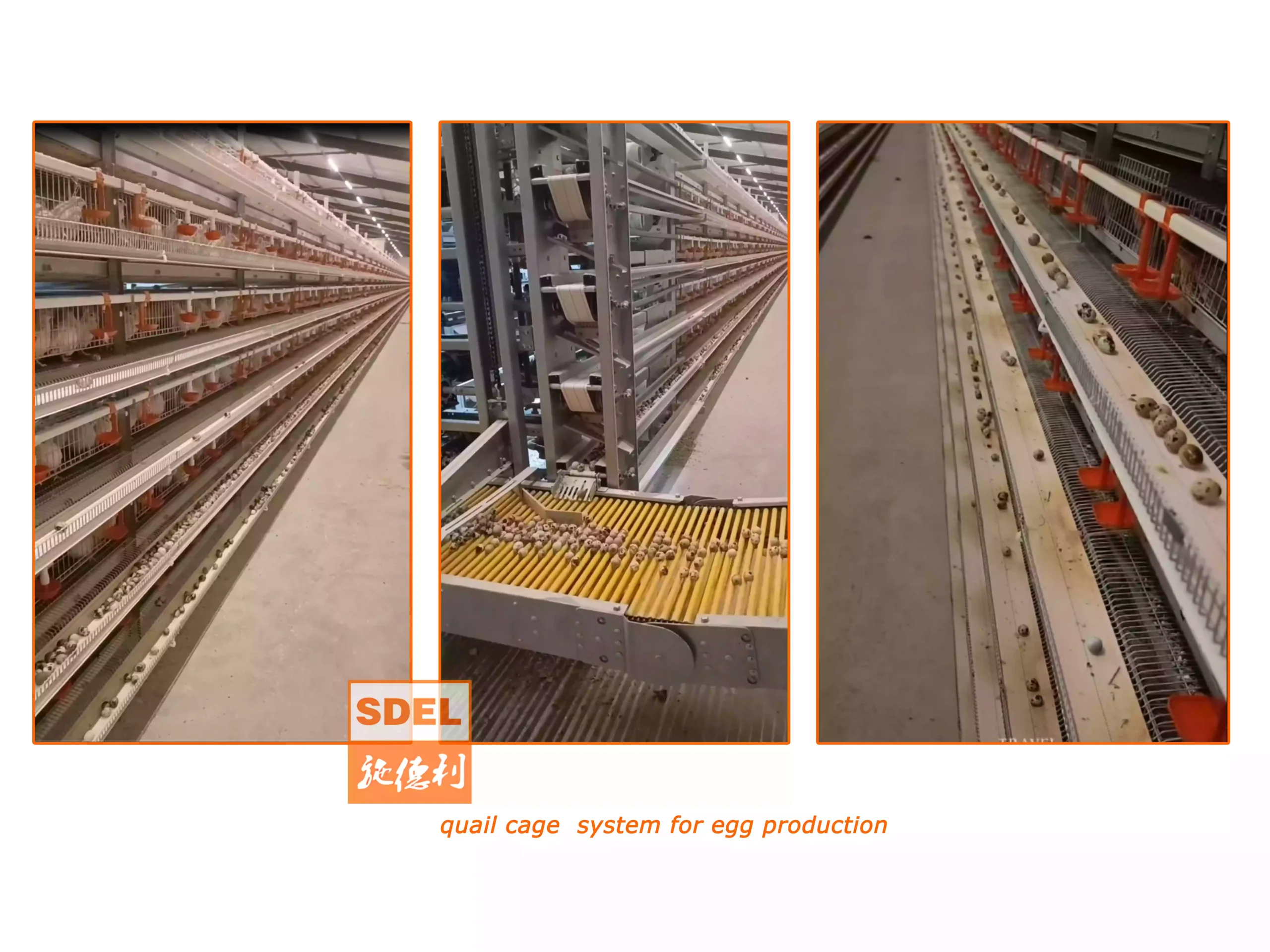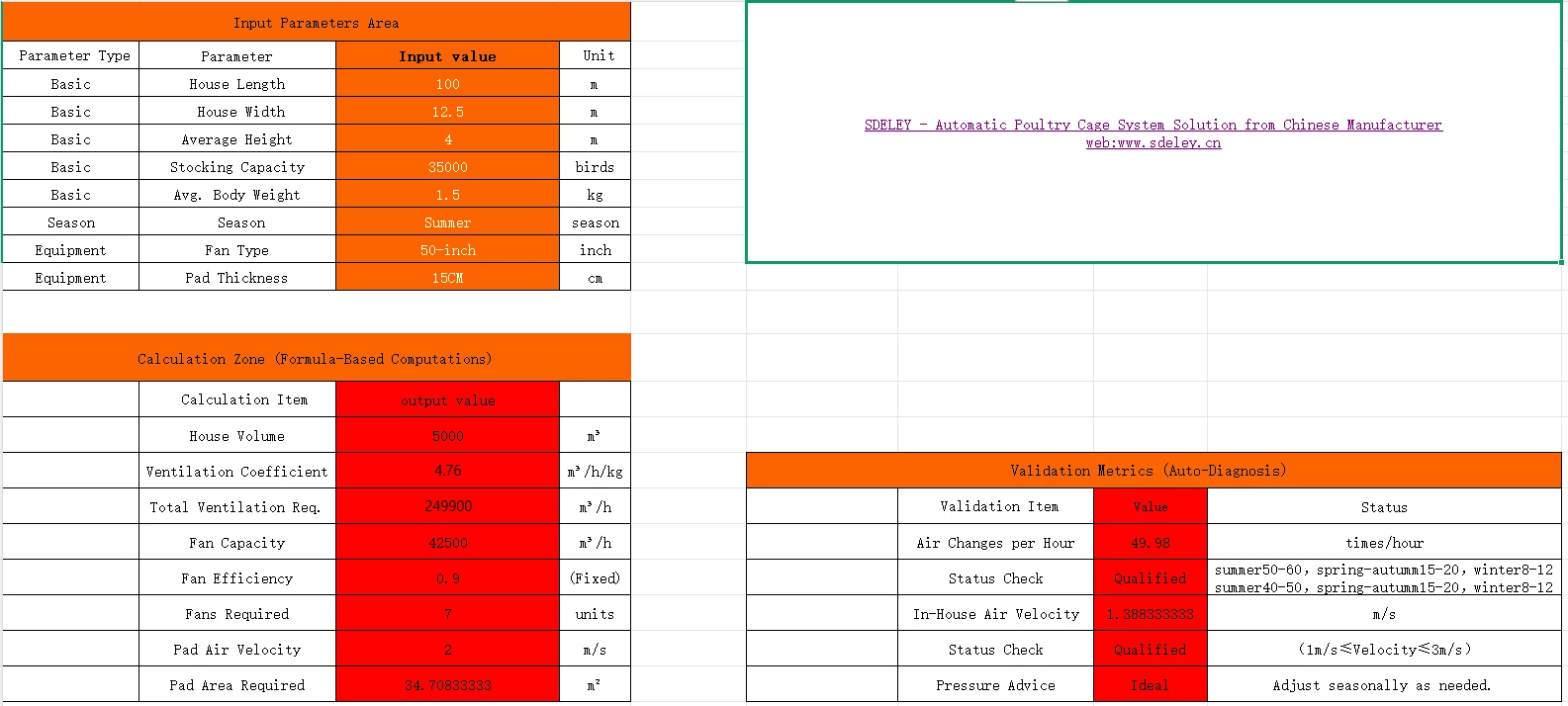
1. Housing Preparation
- Facility Inspection & Maintenance
- Thoroughly check and repair the grow-out house (or main layer house) to ensure:
✓ Functional ventilation, lighting, and manure removal systems
✓ Secure cage structures (no sharp edges or loose wires) - For winter transfers: Install supplemental heating if temperatures fall below 18°C (64°F)
- Thoroughly check and repair the grow-out house (or main layer house) to ensure:
2. Flock Readiness Assessment
- Weight & Physical Checks
- Confirm pullets meet target body weight (varies by breed, e.g., Hy-Line Brown: 1.5–1.8 kg at 16–18 weeks)
- Ensure birds can comfortably access nipple drinkers (adjust height if needed)
- Timing Optimization
- Winter: Transfer at midday (10 AM–2 PM) for warmth & natural light
- Summer: Transfer at dusk to reduce heat stress (ideal: 25–28°C/77–82°F)
3. Stress & Health Management
- Anti-Stress Protocol (3–5 days pre-transfer)
- Add vitamin C (200g/ton feed) or electrolytes to drinking water
- Prevent mycoplasma outbreaks post-stress with doxycycline (if endemic)
- Deworming Schedule Parasite TypeTreatmentTimingAdjuvantTapewormsLevamisole (pre-mix)Night before transferFish oil (5ml/kg feed)CoccidiaRobenidine + intestinal meds2 days pre/post transferVitamin A/D3 water
4. Post-Transfer Adaptation
- 3–5 Day Adjustment Period
- Maintain 16-hour light cycles to stabilize behavior
- Gradually transition to layer feed (7-day mix with grower ration)
- Vaccination delay: Wait until flock shows normal activity/feed intake
- Cage Design Advantages (Our layer cage Systems)

5. Equipment Durability Assurance
- Galvanization Quality
- 150+ hours salt spray test (vs. 90-hour national standard)
- Q235 steel framework:
✓ 12% higher elasticity → ≤1% broken eggs
✓ 3x rust resistance vs. conventional cages
- Structural Integrity
- Reinforced weld points withstand **≥50kg/sq.cm load**
- 10-year lifespan guarantee (tropical climate tested)
🐔🔧




